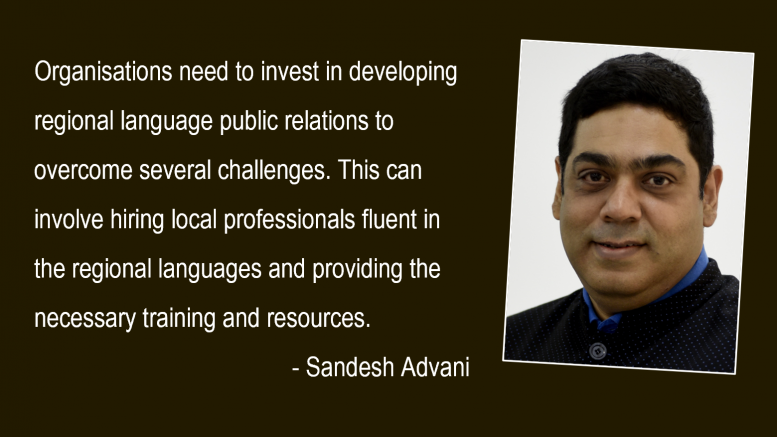Regional language public relations is the practice of communicating with the public through the use of the local language. There are 22 officially recognised languages in India, and over 1.3 billion people speak them. Despite the rich linguistic diversity in India, most public relations activities are conducted in English, which is a language used by only a small fraction of the population. This can lead to a communication gap between organisations and the public, resulting in a lack of understanding and trust.
Regional language public relations in India is critical for several reasons. Firstly, it helps to bridge the language barrier between organisations and the local communities. Using a local language can help build trust and establish a rapport with the public. By speaking the same language, organisations can communicate more effectively with their target audience and convey their messages in a more meaningful and relevant way.
Secondly, regional language public relations can help to reach a wider audience. Most of the population in India speaks regional languages, and many are not comfortable with English. By using regional languages, organisations can reach out to these people and inform them about their products, services, and other activities. This can help to increase awareness and understanding among the local communities and promote the interests of the organisations.
Thirdly, regional language public relations can help to create a more inclusive and diverse environment. India has a rich cultural heritage, and the use of regional languages can help preserve this heritage. By promoting regional languages, organisations can show their respect for the local communities and the diversity of India. This can help to foster a sense of pride and belonging among the people and create a more positive image for the organisation.
However, despite the clear benefits of regional language public relations, many organisations in India still rely on English as the primary language for their public relations activities. This is partly due to a lack of resources and expertise in regional languages. Organisations often struggle to find trained professionals who can translate their messages into the local languages, leading to inaccuracies and misunderstandings.
Organisations need to invest in developing regional language public relations to overcome these challenges. This can involve hiring local professionals fluent in the regional languages and providing the necessary training and resources. Organisations can also collaborate with local organisations and communities to better understand the cultural and linguistic nuances of the local languages. This can help ensure that the messages conveyed through regional public relations are accurate, relevant, and effective.
In conclusion, regional language public relations is essential for organisations in India to build trust and establish a rapport with the local communities. It helps to bridge the language barrier, reach a wider audience, and create a more inclusive and diverse environment. By investing in regional language public relations, organisations can promote their interests and create a more positive image among the people of India.
The views and opinions published here belong to the author and do not necessarily reflect the views and opinions of the publisher.



Be the first to comment on "Regional Language PR in India"